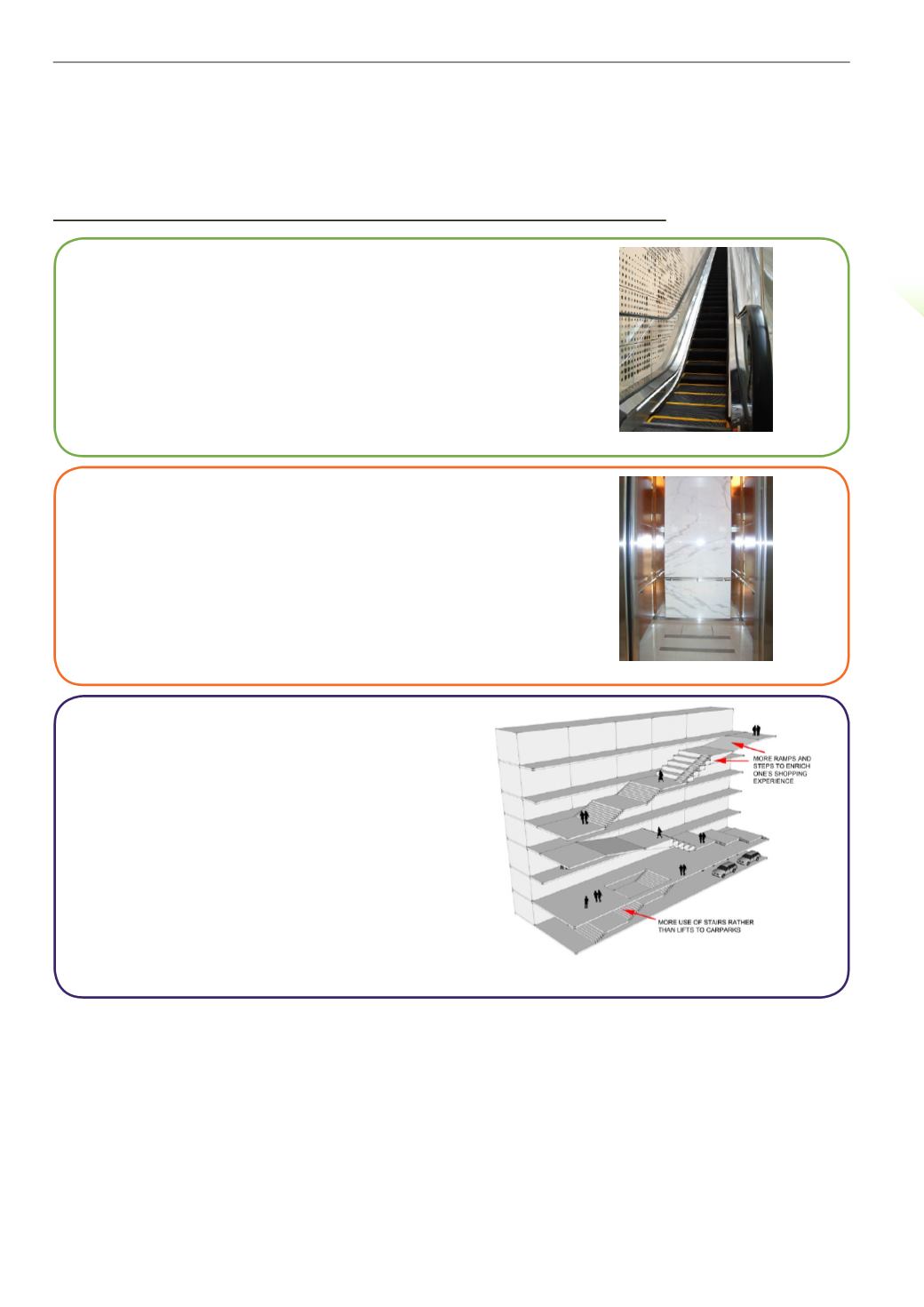
4.1.2 Shopping experience – escalators, lifts, stairs and ramps
Escalators, lifts, stairs and ramps form a vertical circulation path in a shopping mall. Nowadays, low energy consumption
variable speed escalators, which go faster only when someone is using them, are very common and widely utilised.
New laws require the decoration loading inside lift cars to be lighter so as to reduce the energy required to operate
the lifts. Here are some strategies for energy saving by different forms of vertical circulation:
Strategies for energy saving by vertical circulation in shopping malls and shop spaces
A. Escalators
A variable speed escalator reduces its speed when no people are on the
escalator, but resumes its operating speed when passengers are detected.
Less energy is required without any additional safety and management
problems.
Figure 64 Hysan Place
B. Lifts
The Building Energy Efficiency Ordinance requires that the decoration
loading of lift car’s interior should be no heavier than 600kg.
(A granite paving slab measuring 1.5m x 1.5m (12mm thick) is
approximately 88.5 kg)
Figure 65 Hysan Place
C. Stairs and ramps
Apart from these measures, stairs and ramps can be
integrated into the circulation system to provide alternatives
for shop goers, indirectly encouraging physical exercise by
the public for greener living. There are shopping malls where
the shopping corridor system is actually a ramp through which
different levels of shops are seamlessly connected. Stairs,
apart from being useful for walking up and down, can create
spaces for leisure seating and mingling.
Figure 66 Stairs and ramps in shopping malls
and shop spaces
4
Green design for shopping malls and shop spaces
4.1
Retail zoning and circulation planning
4.1.3 Professional help
It is important to engage professionals for detailed consultation on the implementation of retail zoning and circulation
planning within shopping malls and shop spaces. The following is a list of references for obtaining professional help:
• Registered architects – Appendix A (1)
• Authorised persons (AP) & registered structural engineers (RSE) – Appendix A (2)
• Registered professional engineers (RPE) in the building services discipline – Appendix A (4)
•
Appendix A (7)
• Registered Professional Surveyor in the building surveying or property and facility management discipline –
Appendix A (9)
100 Hong Kong Green Shop Guide


